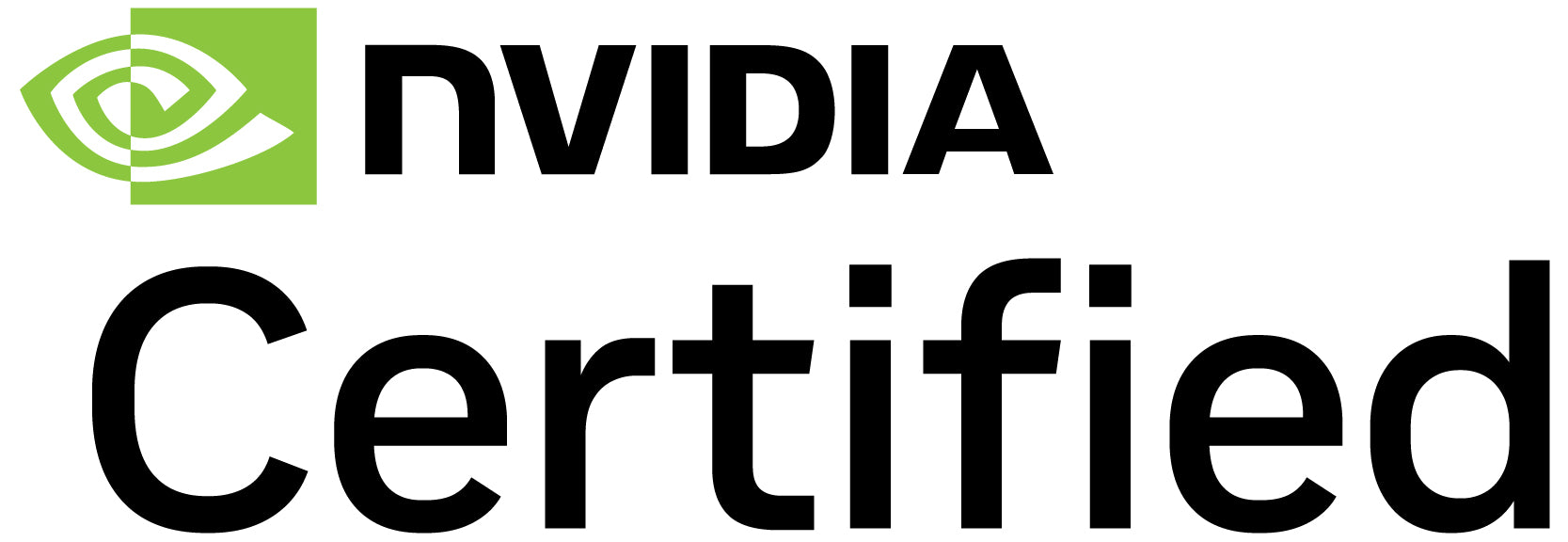
By Tariq Haddad, Systems Engineer
In today’s fast-paced technological landscape, harnessing the power of cutting-edge hardware and software solutions is crucial for organizations across various industries. NVIDIA® offers a range of high-performance computing solutions that can revolutionize your systems' capabilities.
The NVIDIA Qualification program “NVQUAL” is a MODS-based software program through which NVIDIA ensures the compatibility, reliability, and performance of solutions which integrate their hardware and software. By undergoing rigorous testing and verification procedures, NVIDIA-qualified products are validated to meet the highest standards and perform optimally in various computing environments.
Once a system has successfully passed NVIDIA qualification, the system can then be considered for NVIDIA Certification. “NVCerts” goes through a more extensive evaluation process to meet more stringent requirements.

The benefits of NVIDIA-Certified Systems are performance, manageability, security, and scalability. By utilizing a certified system, you can be confident in its ability to handle demanding applications like artificial intelligence, deep learning, analytics, and high-performance computing. The certification ensures that all components work seamlessly together, maximizing your system’s capabilities. The process required to pass both qualification and certification has been made simple using the guidelines provided by NVIDIA to their partners.
NVIDIA provides program guidelines, installation guide, and test scripts. Setting up your system properly and according to the requirements provided in the guidelines is essential to smoothly running the tests. With the help of your NVIDIA contact through the NV-Online portal and NV-Bugs, you can troubleshoot and resolve any issues you might run into during the testing. For example, in the process of qualifying the OSS 4U Pro expansion chassis with the higher-powered NVIDIA A100 80GB GPUs, we replaced the cooling fans with fans that have a higher CFM, as well as adding baffling to redirect more airflow into the GPUs.
After NVIDIA evaluates the test results and provides feedback, a passing system is listed on the NVIDIA website. That system can now undergo the NVIDIA Certified Systems Program testing.
Here at One Stop Systems, we aim to get all our NVIDIA-powered systems qualified and certified by NVIDIA. A product worth mentioning is our Rigel Edge Supercomputer, which brings the power of NVIDIA HGX A100 SXM GPUs to the rugged edge. To this day, Rigel is the only edge-certified system to have completed both NVQUAL and NVCERTS on a system that incorporates the NVIDIA HGX A100 4-GPU backplane.
Embracing NVIDIA qualified and certified systems opens a world of possibilities for optimizing your computing environment. By following the qualification process, you can ensure that your system meets NVDIA’s high standards of compatibility, reliability, and performance. Opting for a certified system guarantees a seamless integration of NVIDIA hardware and software, empowering you to tackle complex tasks and unleash the power of advanced technologies. Unlock the full potential of NVIDIA and take your computing experience to new heights. You can find systems that have passed NVQUAL and NVCerts on the NVIDIA Qualified catalog website here.
Click the buttons below to share this blog post!

By: Jaan Mannik – Director of Commercial Sales
The term AI, or Artificial Intelligence, is everywhere nowadays and has quietly woven itself into the fabric of our daily lives. It powers the recommendations we see on streaming platforms, the navigation apps that guide us through traffic, and even the virtual assistants that answer our questions in seconds. From optimizing energy use in smart homes to predicting market shifts in finance, AI has become the invisible engine driving convenience, efficiency, and insight across industries.
In manufacturing, AI-driven robots collaborate with humans to streamline production. In agriculture, machine learning models monitor crops, forecast yields, and conserve resources. Retailers use predictive analytics to anticipate consumer needs before customers even express them. The reach of AI is no longer confined to futuristic labs, it’s in our phones, vehicles, and cities, constantly learning and adapting to serve us better.

OSS PCIe-based products deliver critical advantages for modern military sensor systems by enabling real-time data acquisition, processing, and transmission in rugged, mission-critical environments. These benefits stem from their ability to support high-bandwidth, low-latency interconnects, modular scalability, and environmental resilience, all of which are essential for today’s advanced military platforms.

Companies today are being asked to do more with data than ever before. Bigger AI models, faster insights, and workloads that don’t stay in one place, it’s a lot to keep up with. Traditional infrastructure just isn’t built for this kind of speed and flexibility.
The answer isn’t about throwing more hardware at the problem. It’s about building smarter, more agile infrastructure that adapts as demands change. And that’s where scale-out and increasingly, a blend of scale-out and scale-up come into play.